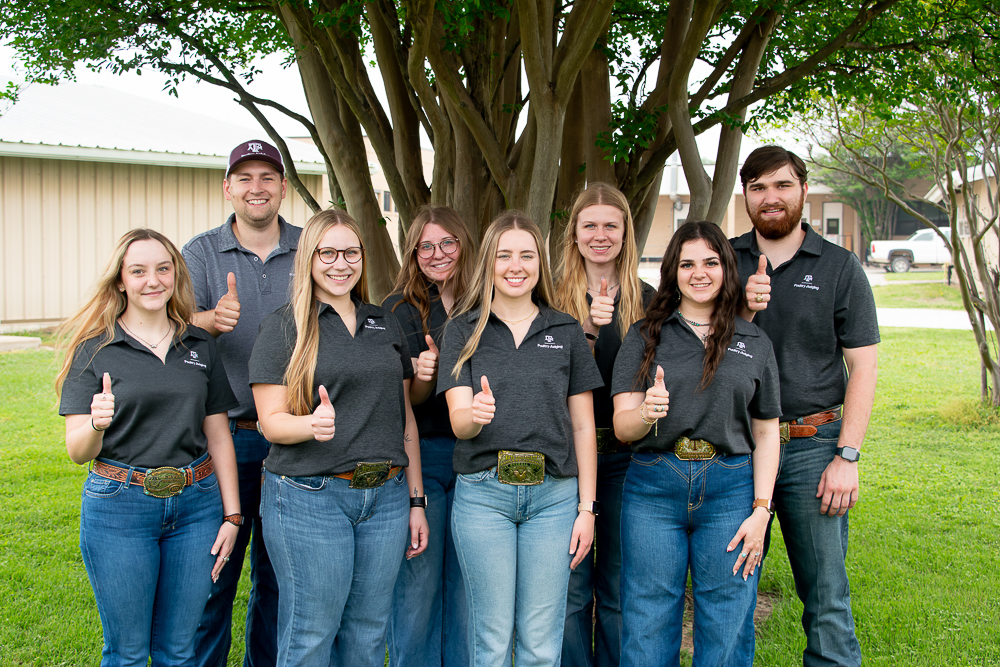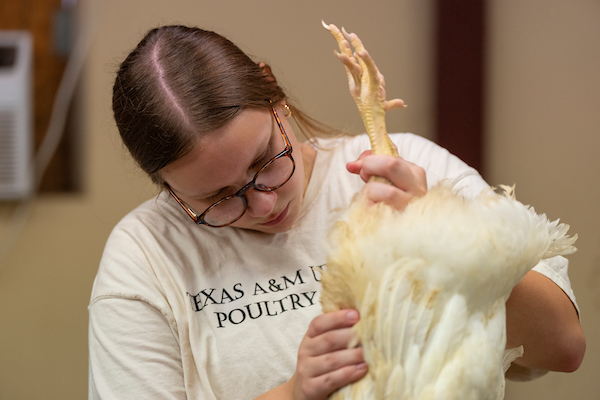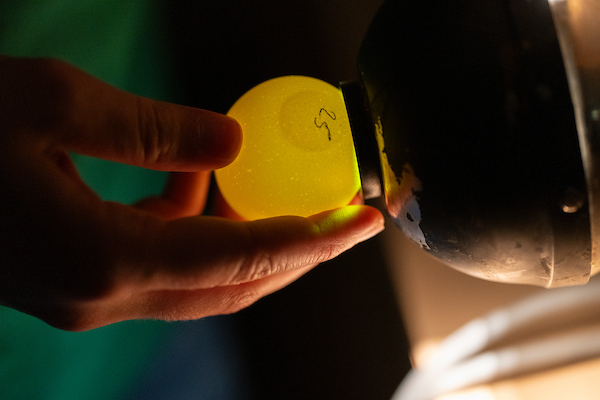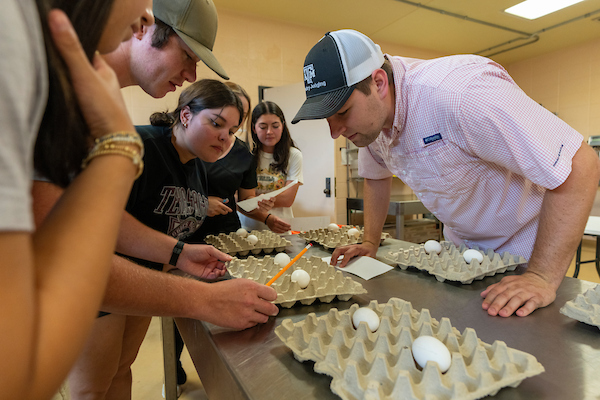With a fifth straight team championship, the Texas A&M Collegiate Poultry Judging Team in the Department of Poultry Science continues to build a strong legacy.
Transform Your Future
Discover degrees from the largest poultry science program in the United States, and learn how you can help shape the future of poultry.
There are only two collegiate poultry judging contests each year: the USPOULTRY Foundation Ted Cameron National Poultry Judging Contest, hosted by Mississippi State University, and the National Collegiate Poultry Judging Contest, hosted by the University of Arkansas.
The Texas A&M team recently won its second straight title at the 76th USPOULTRY Foundation Ted Cameron National Poultry Judging Contest, and during the fall season, the team earned its third consecutive win at the National Collegiate Poultry Judging Contest.
With national wins in both fall and spring contests for multiple years running, the department continues to develop talent and skills that not only sweep the competition but translate directly into poultry industry leadership.
“These students are successful because they’re prepared,” said Brett Meisinger, poultry judging team coach and lecturer in the department. “They’re learning practical, high-level skills that employers value.
The contests are indicative of the fluctuations with the U.S. Department of Agriculture and consumer demands, Meisinger added.
“As the industry evolves, the judging contests adapt to those changes,” Meisinger said. “So, by the time students leave our program, they’re not just good evaluators, they’re ready to be leaders in the poultry industry.”

Students judge their way to real-world roles
The team’s foundation is Texas A&M’s long-established poultry judging program and course. Students meet multiple times each week to train with materials provided by local industry partners.
“We have former students at nearly every poultry complex in the state who are more than willing to connect our students with materials and mentorship to help them succeed,” Meisinger notes.
Additionally, team members are often employed by the department to host and officiate youth poultry judging events statewide.
“Teaching others solidifies your knowledge,” Meisinger said. “When students can explain the why, not just the what, they’re ready for both officiating contests and their future careers.”
Meisinger emphasized how the competition prepares students for real-world roles.
“One of my favorite aspects of this contest is the wide range of industry-relevant skills it covers,” he said. “From selecting breeder birds to improve genetic lines to evaluating laying hens for table egg production to applying USDA grading criteria for meat and eggs, students walk away with tools they can immediately use in their careers.”
Beyond technical knowledge, the program also cultivates the next generation of judging coaches.
“Some of our students plan to return to their communities and coach their own poultry judging teams through 4-H and FFA,” Meisinger added. “I’m excited to see them take on those roles and watch their first teams compete in the years ahead.”




Consistency, culture and champions
Meisinger said the team this spring reflects the depth of Texas A&M’s talent pipeline. While students are only allowed to judge for one year, many previous team members stay on to assist in coaching the next team or outreach, gaining leadership experience early on in their college career.
Teaching solidifies your knowledge. When students can explain the why, not just the what, they’re ready for both officiating contests and their future careers.
Brett Meisinger, Coach
Texas A&M Collegiate Poultry Judging Team
The team’s culture of excellence is just as important as technical knowledge, Meisinger said.
“Every team brings its own uniqueness and energy,” he noted. “This group was particularly driven; they enjoyed challenging each other and me during practices. That kind of culture not only creates champions, but also confident and competent professionals.”
For many team members, poultry judging has been a part of their lives for years. Their success in 4-H and FFA can often be traced back to early experiences with the Department of Poultry Science at summer camps or judging clinics, making their continued involvement especially meaningful.
“Our department has followed many of these students throughout their middle and high school careers. It’s incredibly rewarding to see them carry that momentum into collegiate competition and achieve continued success,” Mesinger said.
Fall 2024 team members
The champion team members and their field of study in the fall at the National Collegiate Poultry Judging Contest were:
- Reagan Barnett ’26, poultry science, overall high point individual honors at the National Collegiate Poultry Judging Contest.
- Kailey Kulhanek ’26, poultry science.
- Jaime Hahn ’27, poultry science.
- Karsyn Murray ’25, agricultural science.
Assistant coaches for the team were Cheyenne Pinkerton ’26, poultry science and animal science, and Naomi Boysen ’25, poultry science and animal science.
Spring team members
Team members earning the championship in the USPOULTRY Foundation Ted Cameron National Poultry Judging Contest this spring were:
- Barnett, overall high point individual honors at the Ted Cameron contest.
- Kulhanek.
- Hahn.
- Madison Perkins ’27, poultry science.
- Katelyn Meister ’26, poultry science and animal science.
- Brady Davis ’25, poultry science.
Pinkerton also served as the assistant coach.
